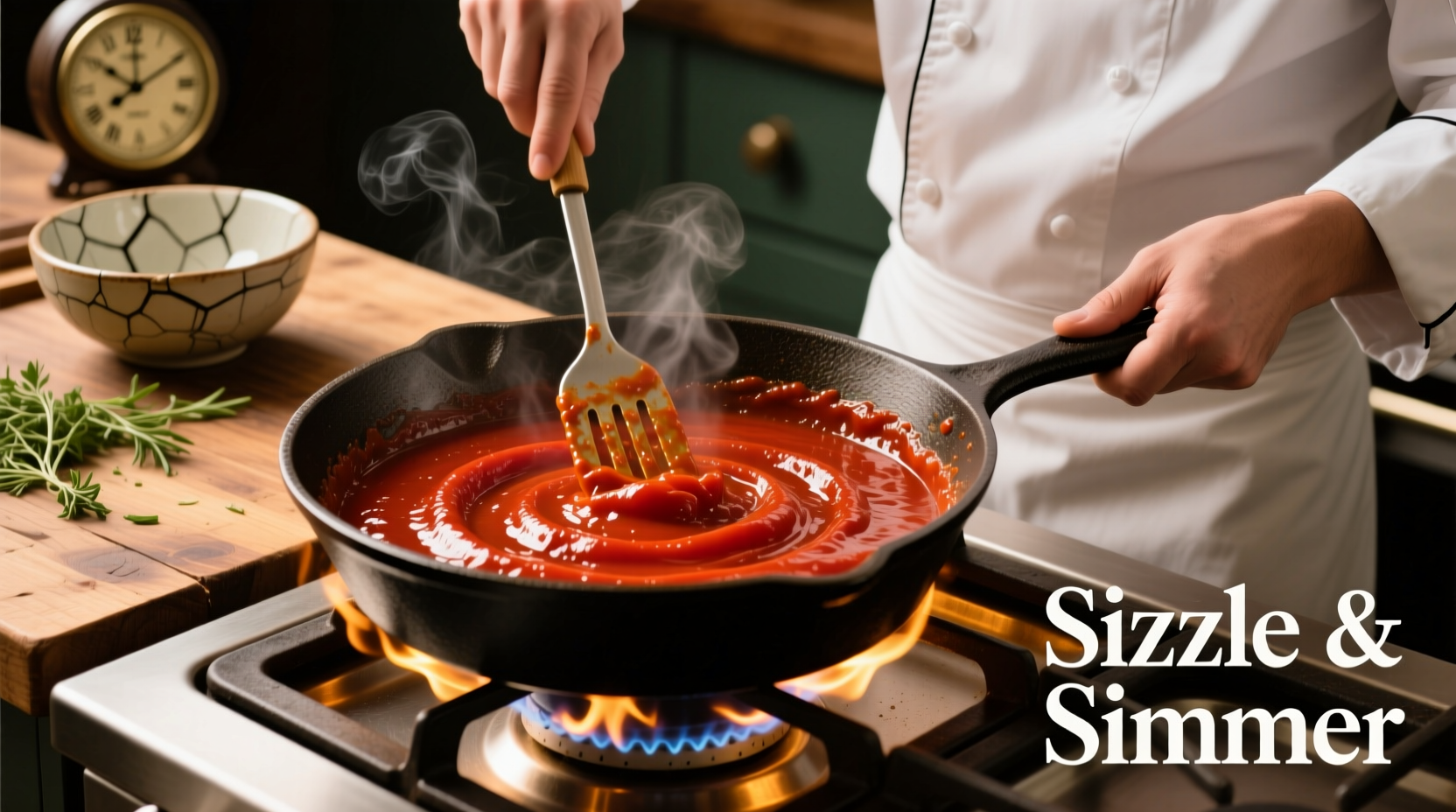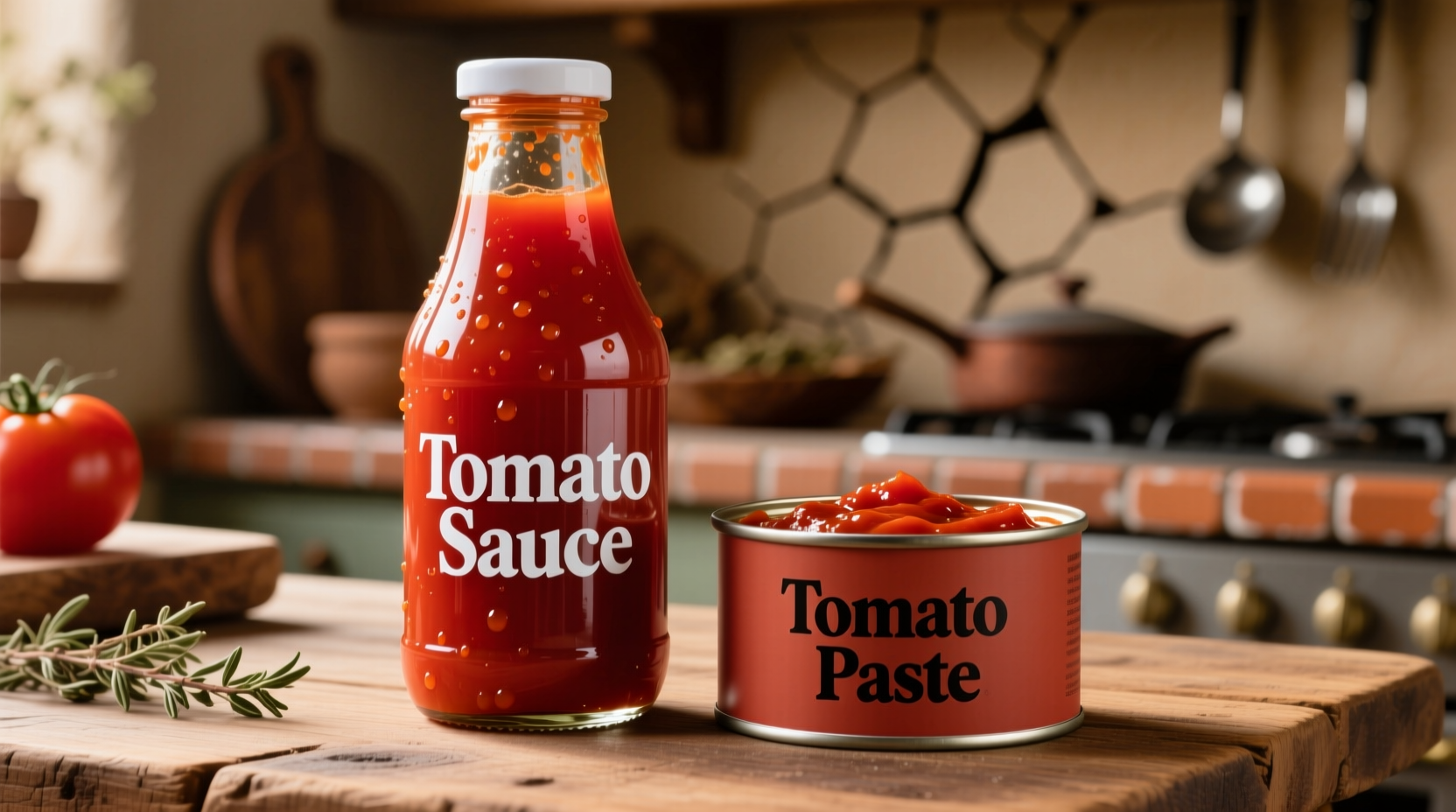Ever wondered why your pasta sauce turned out watery or your stew lacked depth? The confusion between tomato sauce and tomato paste causes more cooking mishaps than you'd think. As a professional chef who's worked with these ingredients daily for over 15 years, I've seen how understanding their distinct properties transforms ordinary dishes into restaurant-quality meals. Let's clarify exactly when to use each and how to leverage their unique characteristics for perfect results every time.
Understanding the Core Differences
The fundamental distinction lies in concentration. Tomato paste undergoes extended cooking that removes most water content, creating an intense tomato flavor with natural sweetness. Tomato sauce maintains more liquid and typically contains added ingredients like herbs, garlic, and onions. This isn't just a texture difference—it's a flavor transformation that affects how each ingredient behaves in cooking.
| Characteristic | Tomato Paste | Tomato Sauce |
|---|---|---|
| Solids Content | 24-30% | 8-12% |
| Texture | Thick, paste-like | Thin, pourable |
| Flavor Profile | Intense, sweet, concentrated | Milder, often seasoned |
| Typical Uses | Flavor base, thickening agent | Main liquid component |
| Shelf Life (unopened) | 18-24 months | 12-18 months |
When to Use Each Ingredient
Professional kitchens treat tomato paste as a flavor foundation rather than a finished product. For rich, complex sauces, start with tomato paste before adding liquids. Cooking it for 2-3 minutes in olive oil (a technique called "blooming") caramelizes natural sugars and eliminates any tinny flavor from the can. This simple step, recommended by the Culinary Institute of America's food science department, develops deeper flavors that tomato sauce alone cannot achieve.
Tomato sauce shines when you need immediate liquid content. Use it for:
- Quick pasta sauces where time is limited
- As the primary liquid in soups and stews
- When you want consistent seasoning without additional prep

Mastering Substitutions
Running out of one ingredient doesn't mean scrapping your recipe. The USDA's FoodData Central confirms that tomato paste contains approximately three times more tomato solids than sauce. When substituting:
Tomato paste for sauce: Mix 1 part paste with 2 parts water. For every 1/4 cup paste, add 1/2 cup water plus 1/4 teaspoon dried herbs to compensate for missing seasonings.
Tomato sauce for paste: Simmer 3 parts sauce until reduced to 1 part volume. This concentrates flavors while maintaining proper acidity levels, crucial for food safety according to FDA guidelines.
Avoiding Common Mistakes
Many home cooks make these critical errors:
Mistake: Adding tomato paste directly to liquids without blooming
Solution: Always cook paste in oil first to develop flavor and prevent clumping
Mistake: Using tomato sauce as a direct substitute without adjusting liquid content
Solution: Reduce other liquids by 25% when substituting sauce for paste
Mistake: Storing opened tomato paste improperly
Solution: Freeze paste in ice cube trays (1 tablespoon per cube) as recommended by the National Center for Home Food Preservation. Transfer frozen cubes to airtight containers for up to 6 months.
Nutritional Comparison
While both products come from tomatoes, their nutritional profiles differ significantly due to concentration. According to USDA FoodData Central (entry #11884):
- Tomato paste (2 tbsp): 30 calories, 7g carbs, 1.4g fiber, 22mg vitamin C
- Tomato sauce (1/2 cup): 45 calories, 10g carbs, 2g fiber, 15mg vitamin C
The higher concentration in paste delivers more lycopene per serving—up to 3 times more than sauce. This powerful antioxidant becomes more bioavailable when cooked with fat, making tomato paste an excellent choice for health-conscious cooking.
Professional Technique: Building Flavor Layers
Master chefs use both ingredients strategically in the same dish. For authentic Italian ragù, start with tomato paste to build foundational flavor, then add tomato sauce later to provide liquid content. This two-stage approach creates complexity that single-ingredient recipes can't match. The key is understanding that tomato paste isn't just "thicker tomato sauce"—it's a completely different ingredient with unique chemical properties that affect how it interacts with other components in your dish.











 浙公网安备
33010002000092号
浙公网安备
33010002000092号 浙B2-20120091-4
浙B2-20120091-4